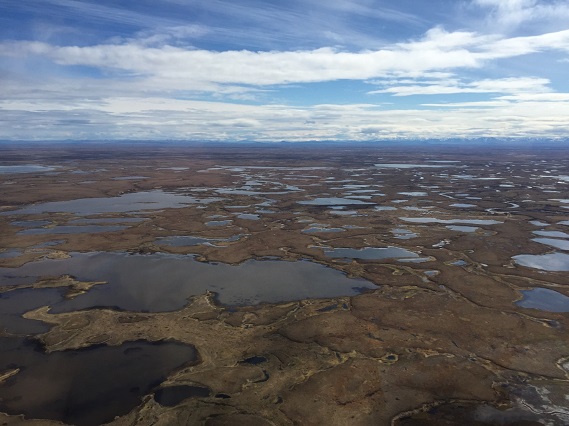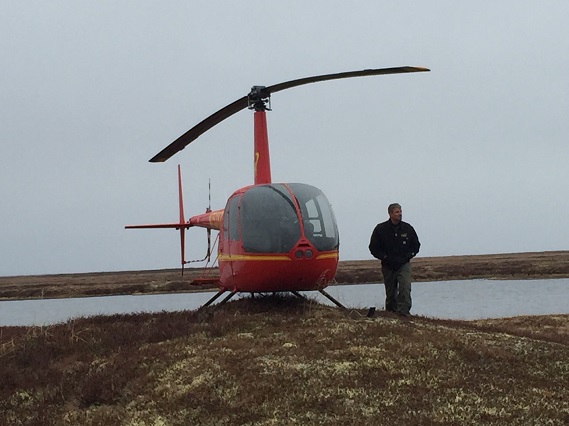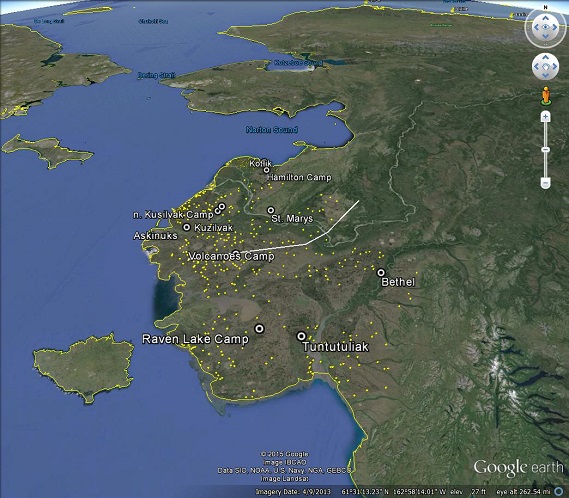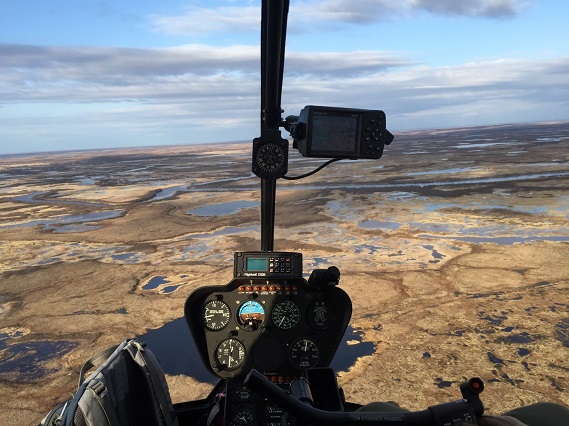Written by Richard Lanctot and Stephen Brown
To understand the status of shorebirds residing in a given area, we need to know how many birds there are, what habitats they need, and how their numbers are changing over time. In many cases, obtaining a good estimate of bird numbers can best be done on the breeding grounds, when birds settle on the tundra and are relatively stable in time. To obtain such estimates, many different organizations in North America started a survey program called the Program for Regional and International Shorebird Monitoring (PRISM). This program involves U.S. and Canadian government agencies, universities, conservation groups, and native communities; and includes surveying birds across the vast North American Arctic.

Aerial view of wetlands in the southern portion of the Yukon Delta National Wildlife Refuge © Richard Lanctot
In 2015, personnel from the Yukon Delta National Wildlife Refuge [EAAF109], the Migratory Bird Program of the United States Fish and Wildlife Service, and two non-governmental organizations (Manomet Center for Conservation Sciences and Alaska Audubon) joined forces to survey shorebirds across the Yukon Delta National Wildlife Refuge in western Alaska. The Refuge became an East Asian-Australasian Flyway Network site in 2012. Personnel visited areas that represent the many different kinds of habitats across the Refuge to learn how many birds use each habitat. The entire survey took place between May 15 and June 10. The visits were timed to take advantage of birds singing and displaying in order to accurately delineate breeding territories. To cover the entire Refuge of about 3.8 million ha in such a short time meant that two teams had to move around in helicopters to reach remote plots in this vast, roadless area, while two other teams used fixed-wing planes and boats to access the Central Coast of the Refuge. In the Central Coast Native Communities and Refuge staff have agreed not to use helicopters due to the large amount of subsistence hunting in the area. Each randomly selected plot of 400 m x 400 m was surveyed for an hour and a half, before moving on to the next location. This year the teams surveyed over 250 plots, and in 2016 a second round of surveys will take place.

Robinson R44 helicopter and pilot Shannon Glenn as he waits for us to return from a shorebird survey © Richard Lanctot

Google Earth image showing plot locations (yellow) and main villages on the Yukon Delta National Wildlife Refuge © Richard Lanctot
Survey results from this project combined with other PRISM information will be used to determine the population size of the many different shorebird species residing on the Refuge. This knowledge and the associated habitat-use information will help the Refuge manage the birds, and also put into perspective the importance of the many sites throughout the non-breeding grounds in Asia and South America. We are particularly interested in learning more about Bar-tailed Godwits that breeds on the Refuge and migrate along the East Asian-Australasian Flyway. This species is believed to be declining due to habitat alteration in the Yellow Sea area and surveys on the breeding grounds will help us estimate their numbers and assess the impacts of habitat loss. By working together, we can better understand changes in bird numbers and focus conservation actions in the right locations so as to allow these birds to recover.

View of the Yukon Delta National Wildlife Refuge from the inside of the R44 helicopter © Richard Lanctot
For more information and materials, please visit Shorebird Working Group page.




